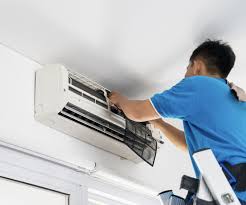Sensory overloads occur when a child on the spectrum is battling to manage and process their emotions and sensory experiences as a result of sensory processing difficulties and hypersensitivity to the environment.
Children and adults on the spectrum tend to struggle in new environments as a result of these difficulties. Sometimes, meltdowns or shutdowns are the final stage of a build-up of stress on the uniquely sensitive sensory systems of those on the spectrum. It’s important to understand that meltdowns are not tantrums because the intent is not attention-seeking.
If your child exhibits sensory challenges and meltdown symptoms, testing for autism in children using M-CHAT screening tools is the first step of the diagnostic process.
That said, it’s common for children on the spectrum to be sensory sensitive, and it’s important for parents to understand the signs and stages of meltdowns to help prevent frequency and severity. These practical tips will help you support your child during sensory overload.
The Rumble Stage
During the rumble or build-up stage of a meltdown, you’ll notice some changes in your child’s behavior. Your child will develop an emotional response to a trigger, and you’ll notice restlessness, agitation, and general discomfort.
You can try to distract your child by kindly removing them from the environment. Offer the opportunity to work on a special interest, visit their sensory time-out space, or join you to run an errand.
The Rage Stage
As the name suggests, the rage stage is the phase where the child becomes inconsolable. Your little one might display the same behaviors as seen in regular tantrums, although your little one is in emotional distress and is not seeking attention.
It’s important to support your child during these periods to help them develop the tools to manage their emotions and sensory difficulties better, instilling independence along the way.
Instead of trying to negotiate with your child, understand that your little one is in overdrive. Cortisol levels spike and the brain struggles to process all the different emotional stimuli; even breathing functions become strained and more shallow.
It’s key to provide support now by dampening the senses of your child and moving them to their safe space. You can use tools like weighted blankets, fidget toys, headphones, or even weighted jackets.
The Recovery Stage
The recovery stage begins when you hear your little one take a deep breath that’s soon followed by multiple smaller gasps and then another deep breath.
As your child begins to exit the rage stage, their brain and body begin to recover from the strain of the experience. Meltdowns are exhausting on the body and mind.
Some children may become fatigued and a bit clingy if they need help soothing at this point. They might also be pretty thirsty. Cortisol levels can take between one and five hours to return to normal.
Support your child with therapeutic activities like kinetic sand play, sensory swing time, and other calming activities. Even gemstone facial rollers are an excellent therapeutic tool for the calming stage.
The main key to managing and providing helpful support during the meltdown cycle is to remain patient and understanding. Meltdowns and shutdowns are, unfortunately, a part of life on the spectrum. Occupational therapy and eventual cognitive-behavioral therapies will also help your child develop the necessary tools to cope with meltdowns and reduce the severity.
